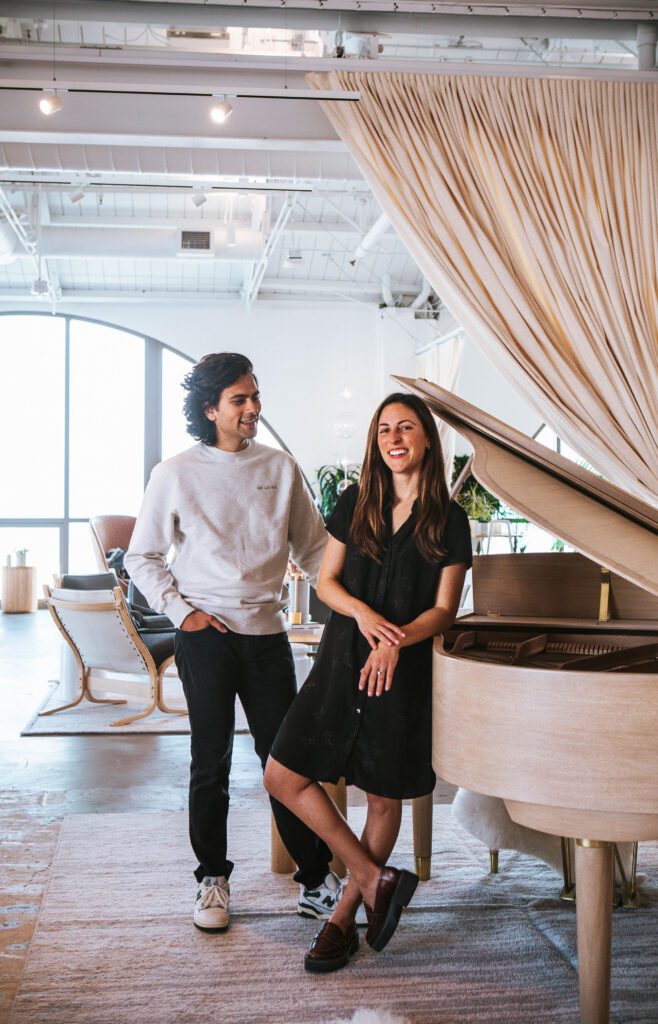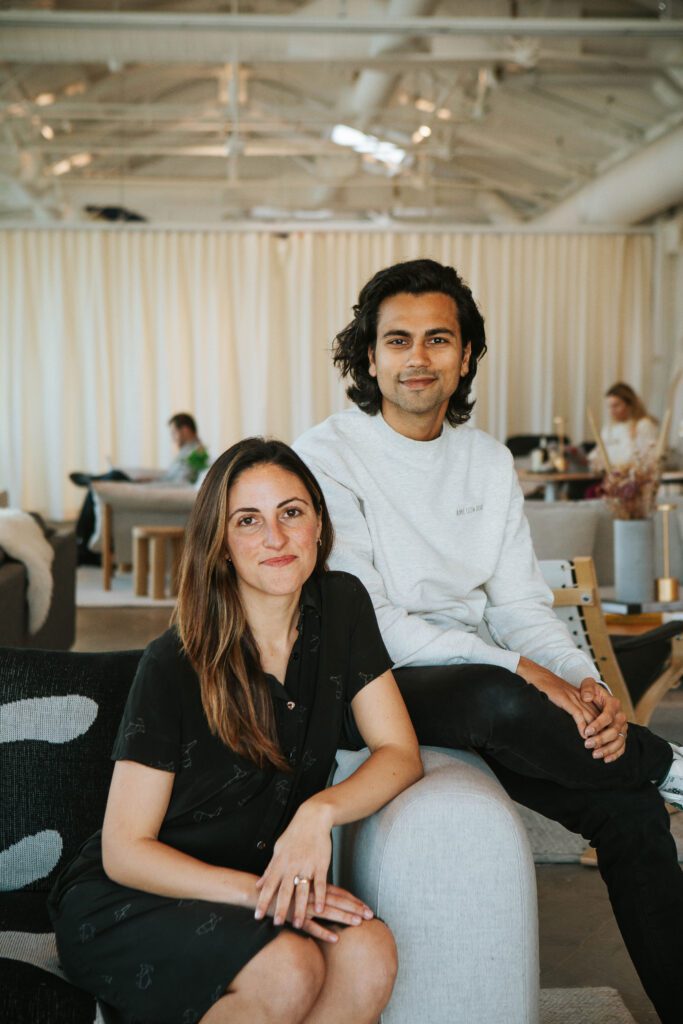“Creative flow is shown to have the highest impact on long-term mental health, more than even mindfulness or optimism.”
Have you ever felt an emptiness within that couldn’t be filled? Have you had the urge to be creative, but didn’t know where to begin? According to clinical psychology researcher, published author (Skyhorse/Simon & Schuster), speaker, and creator Kitina Bajaj, the “majority of adults today are feeling creatively unfulfilled, burned out and stressed.” Adding the pursuit of creativity into our lives can help.
“Creative flow is shown to have the highest impact on long-term mental health, more than even mindfulness or optimism,” says Bajaj, who created her mental well-being start-up, Daydreamers, as “the first and only platform that helps adults exercise, track, and expand their creative brain.” With the goal to “focus on creative habits to reduce burnout and enhance our mental well-being,” Daydreamers’ mission ultimately strives to help people connect with their natural creativity. “That’s when we feel most alive,” says Bajaj.
With a master’s degree in clinical psychology from Columbia’s Mind-Body Institute where she “focused on understanding the intersection of neuropsychology and creative flow, and its impact on our mental, emotional, and brain health,” Bajaj is the co-founder and Chief Well-being Officer of San Francisco-based Daydreamers.

HL: How did you get to where you are today? Tell us about your book.
KB: I always like to say that my career journey is like anything creative: it makes sense to connect the dots looking backwards.
As the daughter of immigrants, I was taught to find “success” first and enjoy life later. I always wanted to do something creative that had a massive impact on our world, but
I didn’t know where to start. So, after graduating early from NYU’s Stern School of Business, I did what any sensible, first generation immigrant daughter would do—start my career at a large investment bank in New York City.
I learned pretty quickly that it wasn’t necessarily the right career path for me, but while I was there, I helped start our environmental sustainability work which was quite nascent at the time. From that experience, I realized how much of a positive impact businesses can have when they dedicate the right mission, resources, and people to making change—and I knew that’s what I wanted to do.
So, I spent a few years working at a philanthropic venture fund focused on mental health and digital learning investments, understanding how to make impact at scale. Concurrently, I started a blog, my creative passion project called On Adulting that was focused on the transition into adulthood, and figuring out how to do it in a fulfilling, mindful, and enjoyable way. After receiving a book deal, I was able to take that full-time and began working on Daydreamers soon after.
Hl: What inspired Daydreamers and when was it founded?
KB: My husband, Dupi, and I started working on Daydreamers while I was pursuing my master’s degree at Columbia and writing my book, On Adulting, about navigating the transition into adulthood in a mindful, happy way. Like anything creative, Daydreamers has taken a non-linear journey; but, in my view, the best things always do.
We first became immersed in the idea of helping people reconnect with their natural creativity, because it was exactly how both of us healed from the depths of burnout in our early twenties. Dupi and I met as undergrads at NYU Stern and worked at investment banks next door to each other after college. We would often commiserate over our struggles with mental health and how it didn’t feel like there were any ways to proactively feel less robotic and more alive.
We found ourselves gravitating towards creative habits, not only as a way to feel better, but enjoy ourselves again. Even though we both grew up in immigrant families, we never taught that we were allowed to be “creative” in an artistic way. Often, creativity is seen as something you’re good or bad at, or that you can ultimately monetize as a career.
After diving deep into the scientific research on everyday creativity, we saw a major gap in the way adults, specifically, could re-engage in creativity for their health and fulfillment.

HL: It’s a wonderful name that immediately evokes a creative space and freedom somehow. Why did you choose it?
KB: We chose the name, Daydreamers, to push back against the status quo. Our reason mirrors nearly everything we strive to do, which is to redefine the way we operate in our modern world and make it more acceptable to live a creative, fulfilling life using science and storytelling.
For most of us, the word “daydreaming” has a negative connotation: we either got in trouble for it when we were kids, or it was seen as a waste of time. But, from a scientific point of view, daydreaming is the birthplace of creativity. Even though, on the surface, it looks like we’re not doing anything, our brains are making myriad connections. Every time you think of Daydreamers, we want it to be a permission slip to be unproductive—for good.
HL: What are some statistics that might alarm us? How does the pursuit of creativity help? We all feel stress. How can Daydreamers help us with burnout and stress?
KB: The majority of adults today feel creatively unfulfilled, burned out, and stressed. In fact, over 65 percent of adults today say that they’re creatively unfulfilled, and over a quarter of adults are too stressed to function “normally” in daily life. Our poor mental health and well-being isn’t just an epidemic; the majority of adults today are not addressing their mental health issues because they’re caught in the middle. A lack of burnout or mental health struggles doesn’t necessarily mean we’re thriving. In scientific research, we call this “languishing,” and it’s the area of mental health where we’re at the highest risk for deeper mental health issues down the road.
At Daydreamers, we see mental health as a spectrum, and it’s our ultimate mission to help us all get our spark back and reach our fullest human potential. So, we’re helping adults engage in creative habits consistently to not only feel less burned out, but more alive.
We know, through scientific research and our own testing, that engaging in mini-c creativity consistently helps send our brain on a “positive upward spiral.” This means that it not only reduces negative emotions, but also helps increase our resilience, happiness, and sense of connection. Even more, early Daydreamers’ members have reduced their burnout by 60 percent on average.
Within Daydreamers, we’ve broken down each of the clinically validated aspects of burnout into four individual “journeys” to reduce stress, increase vitality, enhance your resilience, and feel more present in your daily life. When members begin Daydreamers, they’ll take the “optimal journey” we’ve found—through years of testing—to reduce burnout in the most effective way, starting with our Chill Pathway, to feel more mindful, less overwhelmed, and most importantly, less perfectionist-driven.

HL: What would an interaction with Daydreamers typically entail?
KB: Daydreamers provides you with everything you need to turn creativity into a consistent, sustainable part of your life. We spent years learning about what the hurdles are in turning creativity into a habit for your well-being, and often heard that adults never know where to start, what to use, or how to make time for it.
So, the Daydreamers ecosystem is comprehensive and makes it as easy as possible to turn creativity into a habit. Our private, members-only app has creative exercises that support targeted well-being goals, scientific learnings about creativity, and the ability to track what impact your creative practice is having on your emotions and perspective. We also provide our members with a set of physical creative tools—we call them dumbbells for your brain—to simplify the act of getting started. And finally, we help you intellectualize your learnings with the help of an individual Daydreamers guide and our community. The best comp we can give is Daydreamers feels like a combination of your favorite meditation app, sleep tracker, and gym/personal trainer rolled into one—except for helping you feel more creatively fulfilled and alive.
Daydreamers is an ongoing habit that’s meant to fit into your life, whether you have five minutes in between meetings or an entire weekend afternoon. On average, we see our members exercising their creative brain for about 20 minutes per session, about three to four times a week. It’s meant to be flexible and sustainable!
It’s core to our mission to make this as accessible as we can. While we’re in early access, you can join for a discounted price if you’re a fit. (Use invitation code “experiment” to skip the waitlist.)
HL: Is the pursuit for creativity for everyone—even those who are very left brained and linear? Can Daydreamers be used by people of any age?
KB: Creativity is an innately human trait. It’s something we all have access to and often lose touch with as we enter adulthood. The basis of how we see creativity at Daydreamers is our openness to new ideas, experiences, and ways of thinking about the world—which is something that’s literally in our human DNA.
Our early members cover so many different archetypes, it still amazes me how much creativity resonates with all of us. They range in age from right out of college to empty nesters and in creative comfort level from people who are artists by trade to those who don’t consider themselves “creative” at all. Right now, we’re excited to expand our community and support as many people as we can!
HL: What else would you like for us to know?
KB: Creativity doesn’t need to fall to the bottom of your “To Do” list; it’s the basis for feeling most fulfilled and alive.
We’d love to have you as part of the Daydreamers universe! We’re accepting new members through our website and have a bunch of free resources on the intersection of creativity and well-being on our newsletter on Substack called Head in the Clouds.
